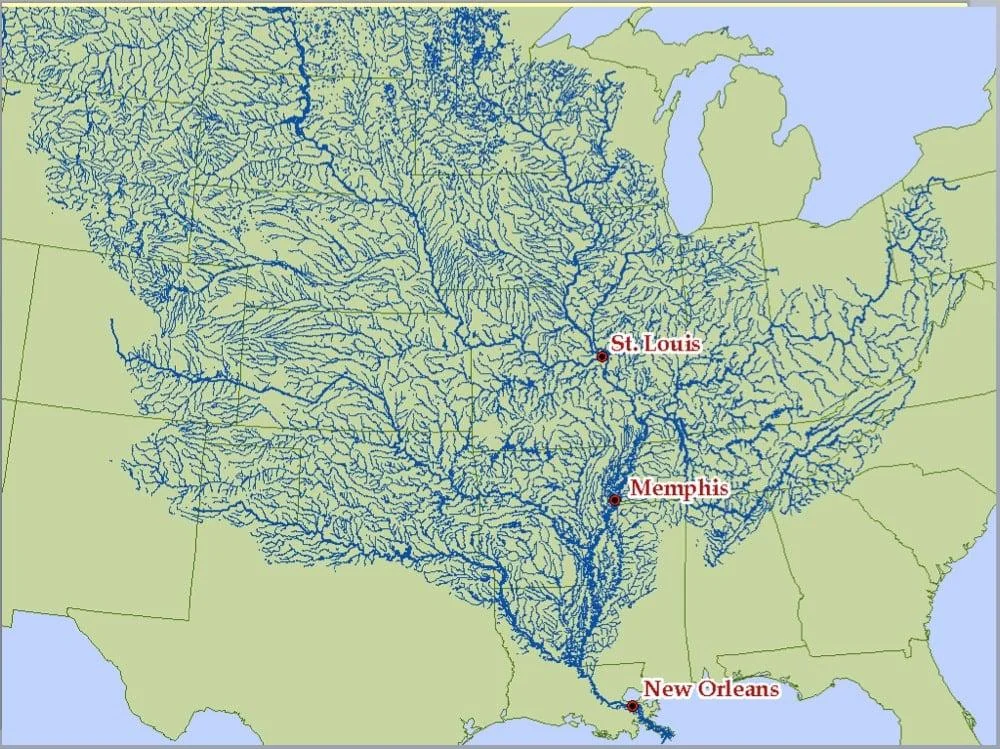There's a reason why indigenous people called it Mississippi, a word that came from Ojibwe and Algonquin languages, which are related.
I speak my language of Ojibwe Cree in northern Ontario and it's very clear for me to understand the word.
Mishi ... is a word we use to describe something as big in size
Sipi ... is the word for River, a major River, as opposed to a small creek or channel.
In my language and dialect, Mississippi literally translates to just 'Big River'
And by the look of this map .... it is definitely a 'Big River'

